The Philippines, an archipelago nation of over 7,600 islands, is a dream destination for scuba divers worldwide. Nestled in the heart of the Coral Triangle, the epicenter of marine biodiversity, diving in the Philippines offers an unparalleled underwater spectacle. From vibrant coral reefs teeming with life to historic wrecks and encounters with majestic pelagics, Philippines scuba diving has something for every level of diver.
If you’re planning your underwater adventure and searching for the best diving Philippines has to offer, you’ve come to the right place. This guide will take you through some of the most incredible diving places in Philippines, highlight top dive sites, and touch on what to look for in dive resorts.
See also: The Top 7 Must Haves Every Traveler Needs
Why is Diving in the Philippines World-Class?
The reputation of Philippine diving isn’t just hype. Here’s why it’s a top-tier global destination:
- Heart of the Coral Triangle: This region boasts the highest concentration of marine species on the planet. Expect dazzling coral diversity and a staggering number of fish species.
- Incredible Biodiversity: From tiny pygmy seahorses and flamboyant cuttlefish to whale sharks and thresher sharks, the marine life is a photographer’s dream.
- Variety of Dive Experiences: Whether you’re into exploring dramatic walls, navigating historic WWII wrecks, hunting for critters in muck, or drifting along vibrant reefs, you’ll find it here.
- Warm, Clear Waters: Enjoy comfortable water temperatures year-round, often with excellent visibility.
Best Dive Sites & Regions in the Philippines
The sheer number of diving places in Philippines can be overwhelming. Here are some of the most renowned regions and best dive sites philippines has, consistently delivering unforgettable scuba diving in the philippines experiences:
1. Tubbataha Reefs Natural Park, Palawan
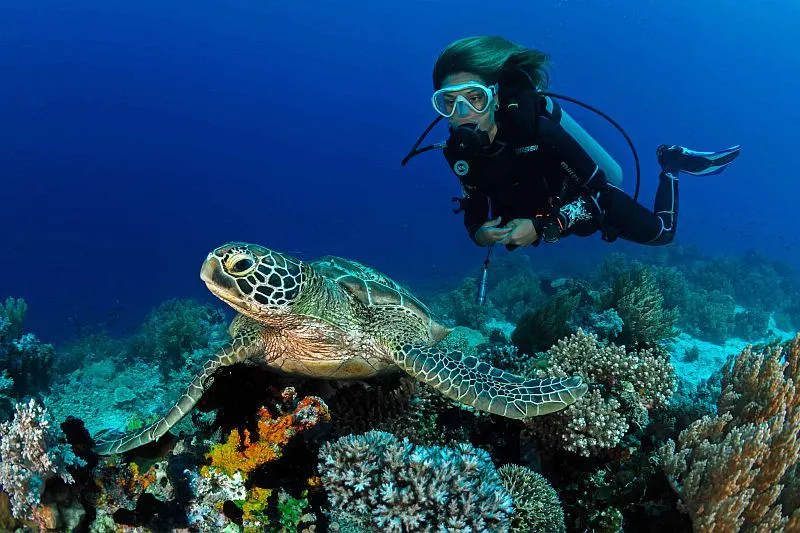
* Why it’s famous: A UNESCO World Heritage site, Tubbataha is often cited as the pinnacle of Philippines diving. These remote atolls in the Sulu Sea are pristine, offering massive coral walls, incredible visibility, and a haven for large marine life.
* What to see: Sharks (whitetip, blacktip, grey reef, sometimes hammerheads and tiger sharks), manta rays, turtles, whale sharks (seasonal), huge schools of jacks and barracuda, diverse coral species.
* Best time to dive: March to June (liveaboard season only).
* Skill level: Advanced due to open ocean conditions and potential strong currents.
* This is truly one of the best place to scuba dive in philippines for pelagic action.
2. Anilao, Batangas (Luzon)
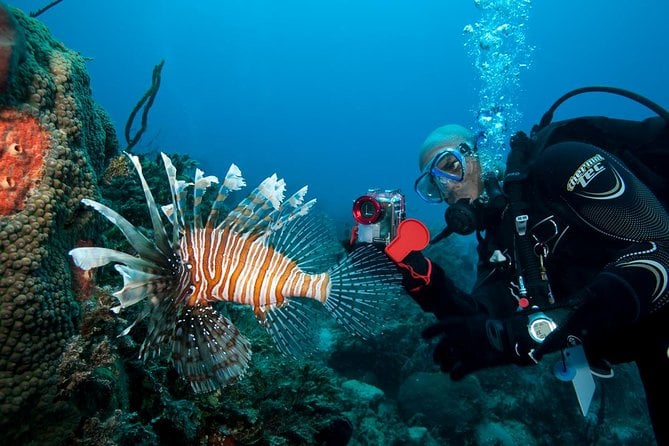
* Why it’s famous: Known as the “Macro Photography Capital of the Philippines” and a birthplace of diving in the Philippines. It’s particularly famous for muck diving and blackwater diving.
* What to see: A mind-boggling array of critters – nudibranchs (over 600 species!), frogfish, pygmy seahorses, flamboyant cuttlefish, blue-ringed octopus, various shrimps and crabs, mandarinfish. Healthy coral reefs are also abundant.
* Best time to dive: October to May.
* Skill level: All levels, with many beginner-friendly sites and more challenging ones for advanced divers.
See my post: Anilao Diving: A Macro Paradise for Scuba Divers in the Philippines
3. Apo Reef Natural Park, Occidental Mindoro
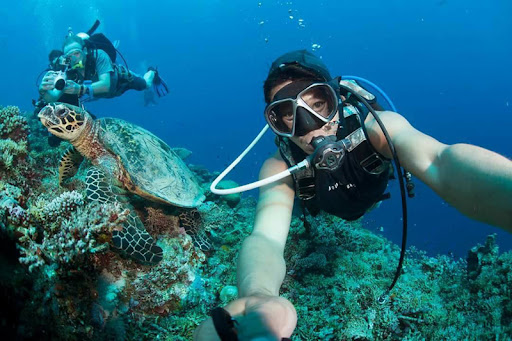
* Why it’s famous: The second-largest contiguous coral reef system in the world. It’s a remote, protected area offering dramatic walls and abundant marine life.
* What to see: Reef sharks, turtles, barracuda, schools of trevally and snapper, manta rays, vibrant corals, and occasional encounters with larger pelagics.
* Best time to dive: November to May.
* Skill level: Advanced recommended due to potential strong currents and depths.
4. Malapascua Island, Cebu

* Why it’s famous: The only place in the world where recreational divers can reliably see pelagic thresher sharks nearly every day at Monad Shoal (now often Kimud Shoal for best sightings).
* What to see: Thresher sharks (early morning dives), whitetip reef sharks, manta rays (seasonal), hammerheads (seasonal at Kimud Shoal), diverse macro life at other sites around the island.
* Best time to dive: Year-round, but November to May offers the calmest seas.
* Skill level: Advanced Open Water required for thresher shark dives due to depth (20-30m).
5. Coron Bay, Palawan
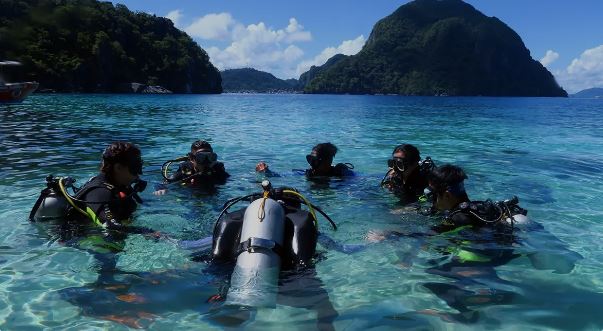
* Why it’s famous: World-renowned for its Japanese WWII shipwreck diving. A fleet of Japanese supply ships was sunk here in 1944.
* What to see: Several large, well-preserved shipwrecks (like Irako, Okikawa Maru, Akitsushima) encrusted with corals and teeming with fish. Barracuda Lake (a unique thermocline and halocline dive) is also a highlight.
* Best time to dive: October to June.
* Skill level: All levels. Some wrecks are shallow enough for beginners, while others offer penetration opportunities for experienced wreck divers.
6. Puerto Galera, Oriental Mindoro
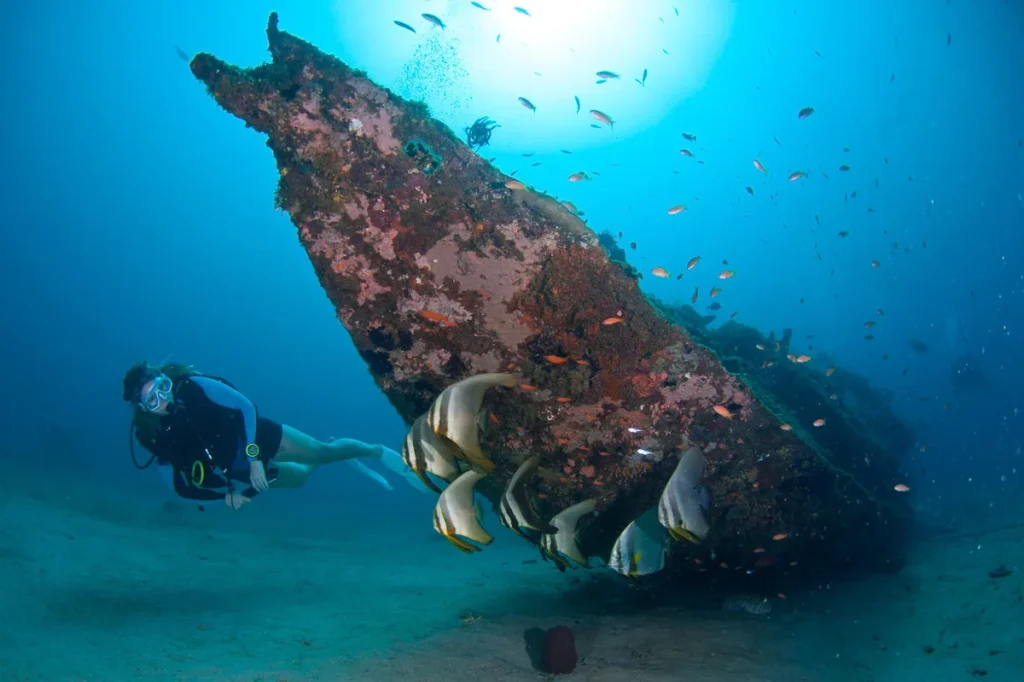
* Why it’s famous: Offers a huge variety of dive sites easily accessible from Sabang Beach or White Beach. It’s part of the Verde Island Passage, known for its incredible marine biodiversity.
* What to see: Lush coral gardens, diverse reef fish, macro critters, small wrecks, and drift dives. Verde Island (a day trip) is a highlight with stunning walls and strong currents attracting pelagics.
* Best time to dive: October to May.
* Skill level: All levels, from beginner training sites to challenging drift dives.
7. Dauin & Apo Island, Negros Oriental
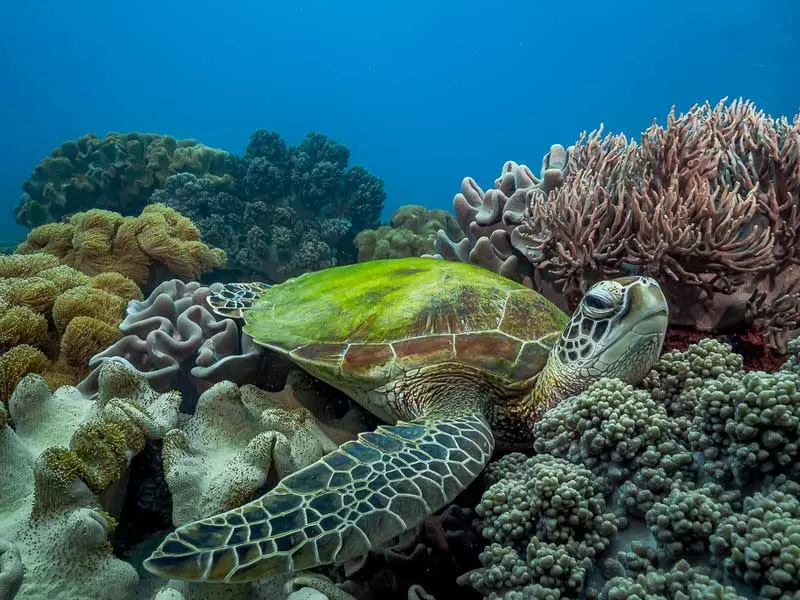
* Why it’s famous: Dauin is another top muck diving destination, with volcanic sand creating a habitat for rare critters. Nearby Apo Island is a marine sanctuary with spectacular coral gardens and turtles.
* What to see: In Dauin: frogfish, seahorses, ghost pipefish, octopus species, nudibranchs galore. At Apo Island: healthy hard and soft corals, huge numbers of sea turtles, jacks, and diverse reef fish.
* Best time to dive: Year-round, but best from October to June.
* Skill level: Dauin is great for all levels. Apo Island can have strong currents, making some sites better for experienced divers.
8. Moalboal, Cebu
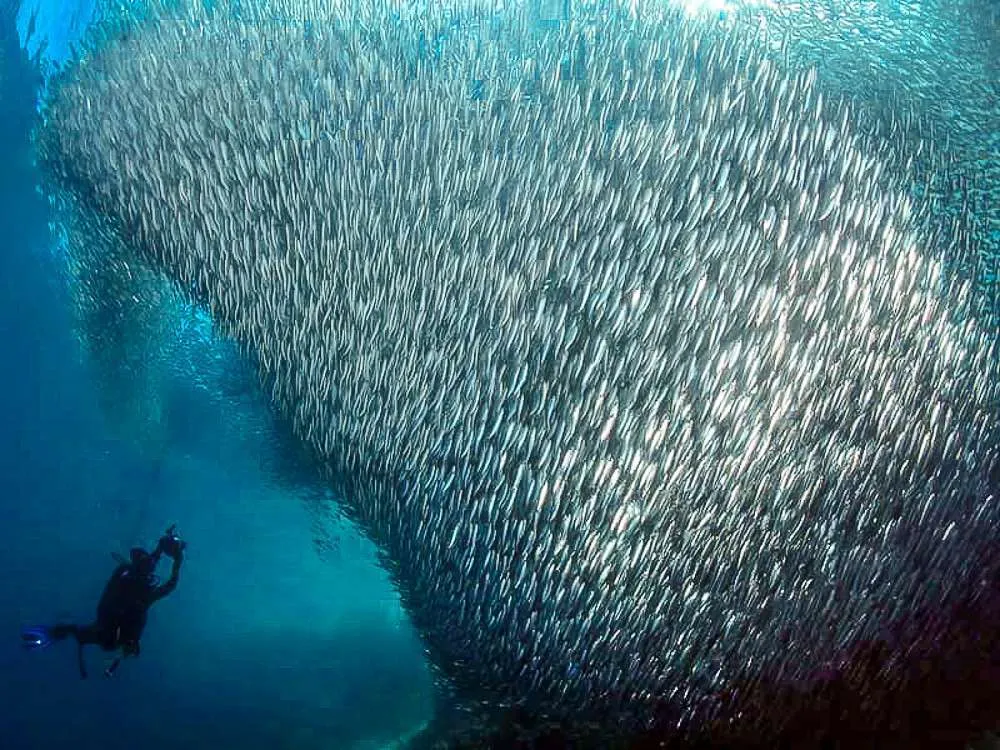
* Why it’s famous: The incredible sardine run – millions of sardines forming massive bait balls just off Panagsama Beach. Pescador Island is also a highlight.
* What to see: The sardine run (year-round!), turtles, frogfish, diverse reef fish. Pescador Island offers beautiful walls, caves, and schooling fish.
* Best time to dive: Year-round, calmer seas from November to May.
* Skill level: All levels. The sardine run is accessible even to snorkelers.
9. Bohol (Panglao, Balicasag, Anda)
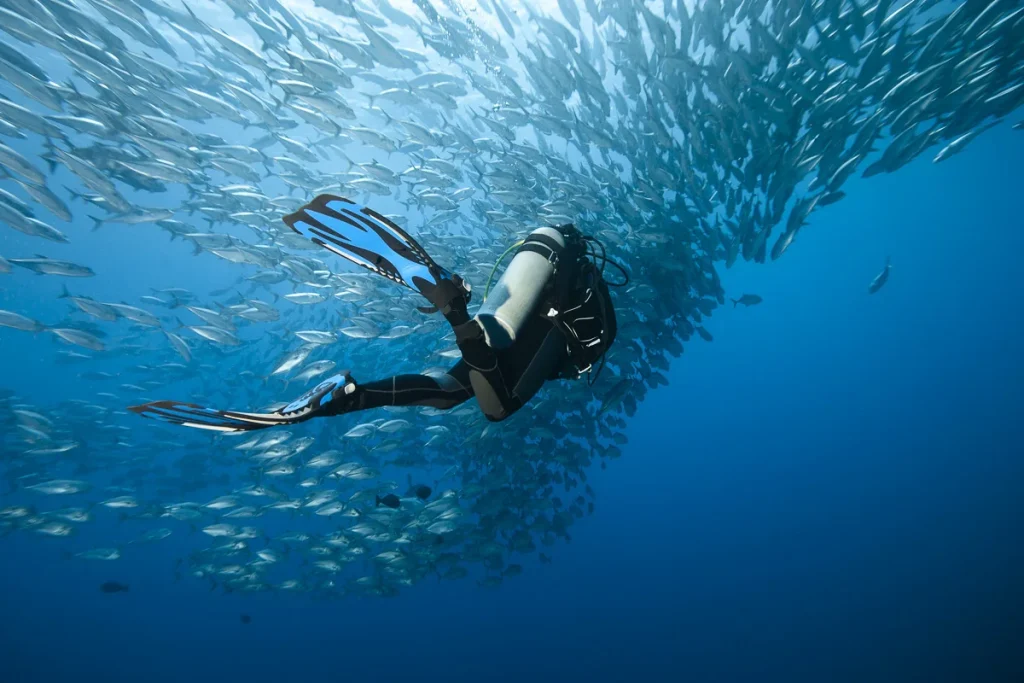
* Why it’s famous: Panglao offers beautiful wall dives and macro life. Balicasag Island is a marine sanctuary known for its turtles, jacks, and barracudas. Anda, on the eastern side of Bohol, offers pristine reefs and fewer crowds.
* What to see: Turtles, schools of jacks, barracudas, vibrant corals, pygmy seahorses, frogfish, and diverse reef fish. Napaling Reef in Panglao also has a sardine run.
* Best time to dive: Year-round, with November to May being optimal.
* Skill level: All levels.
What to Look for in the Best Dive Resorts Philippines
Many of the locations above host some of the best dive resorts philippines has. When choosing, consider:
- On-site PADI/SSI Dive Center: Look for professional operations with experienced local divemasters and instructors.
- Quality Rental Gear: If you’re not bringing your own, ensure they have well-maintained equipment.
- Proximity to Dive Sites: Minimizes travel time to the diving philippines best dive sites.
- Boat Quality & Safety: Comfortable and safe dive boats (bangkas are common and well-suited).
- Eco-Friendly Practices: Resorts that prioritize marine conservation.
- Amenities: Comfortable rooms, good food, and other facilities to relax after a day of scuba diving philippines.
Practical Tips for Your Philippines Scuba Diving Adventure
- Best Time to Dive (General): While diving is possible year-round, the main dry season (November to May) generally offers the calmest seas and best visibility in most regions. However, some locations like Tubbataha have a very specific, shorter season.
- Certification: Bring your certification card. Consider an Advanced Open Water course if you want to explore deeper sites or wrecks.
- Dive Insurance: Highly recommended for all divers.
- Respect the Reefs: Practice good buoyancy, don’t touch marine life, and choose eco-conscious operators. Help protect the beautiful diving in philippines best dive sites.
- Pack Accordingly: Dive computer, BCD, regulators (if bringing your own), mask, fins, snorkel, wetsuit (3mm is usually sufficient), reef-safe sunscreen, reusable water bottle, and any personal dive accessories.
Your Underwater Adventure Awaits!
Philippine diving truly offers an embarrassment of riches for underwater enthusiasts. From the macro wonders of Anilao and Dauin to the thrilling wrecks of Coron and the pelagic encounters in Tubbataha and Malapascua, your scuba diving in the philippines trip is bound to be unforgettable.
What are your favorite diving places in philippines, or which spot is at the top of your list? Share your thoughts in the comments below!
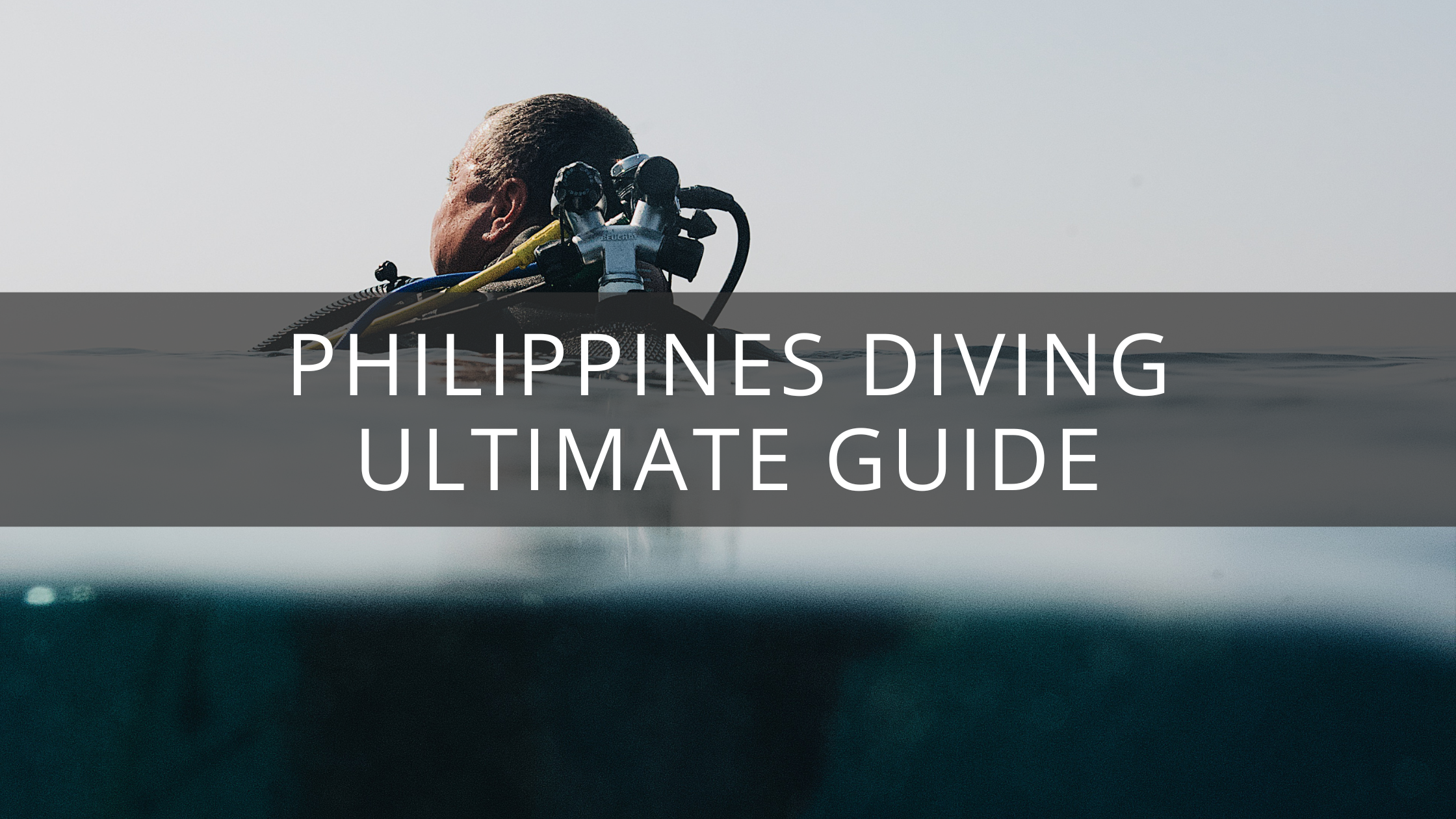
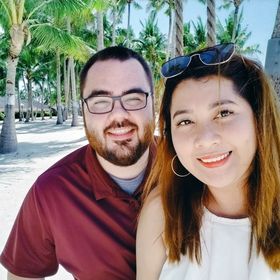
Leave a Reply